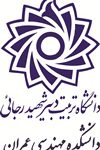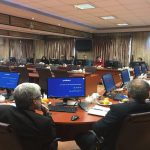About the Faculty
Department History
The first activity in Department of Civil Engineering at the Shahid RajaeeTeacher Training University stated By accepting students in associate degree in Civil Engineering with different trends since 1980. The school received the license for students’ admission in Bachelor degree in1993 by Ministry of Science, Research and Technology and then Bachelor students entered in civil engineering in this school since 2004. Postgraduate level since 2007 and PhD students since 2011 entered in this faculty.
Now this faculty is working with more than 30 full-time faculty members and research activity continues in thrre departments: Structure and Earthquake Engineering, Geotechnical and Water Engineering and Surveying and Geomatics Engineering.
The faculty equipped with workshops, educational facilities and research laboratories which provide educational and research services in various fields of structural engineering and earthquake, concrete technology, geotechnical engineering, hydraulics, surveying, remote sensing, photogrammetry and geomatics.
View
Faculty of Civil Engineering as a comprehensive and unique college at the University of Shahid Rajaee Teacher Training has The potential for scientific excellence, With adherence to the lofty principles of Islam, Professional ethics and continuous improvement and by relying on human resources and social efficient try to create people committed to education, creative, professional, researchers and entrepreneurs to meet the needs of society and its cultural excellence , especially for the Ministry of Education so is going to produce and promote the interests of the national and international level by applying advanced technologies , international standards and strengthen cooperation with scientific and cultural centers.
The prospect of the Faculty include:
- To establish and develop the needed fields of postgraduate (Masters and PhD)
- Production of science and technology and the training of pious, expert and efficient in teaching and basic research, applied and develop research.
- Develop and update laboratory and workshop equipment.
- Provide facilities for research, including publication of books, articles, participate in scientific conferences, sabbaticals.
- Connection with scientific centers inside and outside the country, identify needs and provide management services to solve problems.




